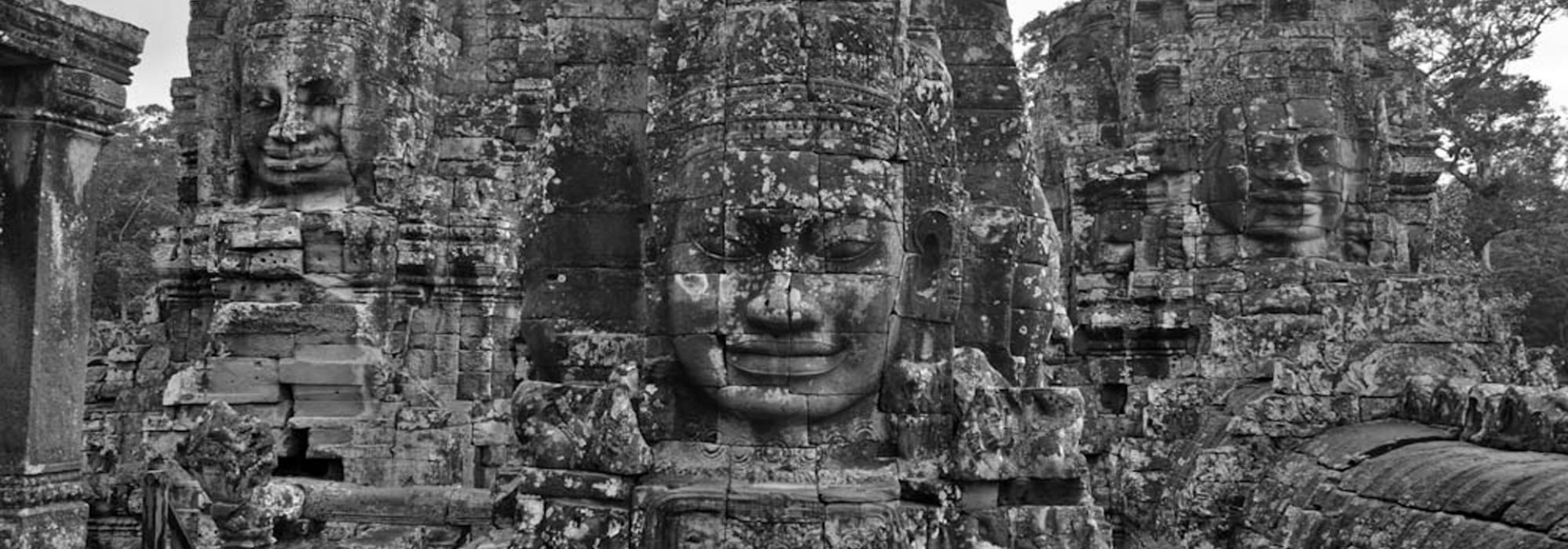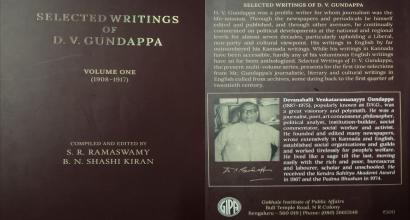Prevalence of Dharmaśāstra-Purāṇa–Itihāsa Traditions in Cambodia
7th Century CE
There is ample evidence to show that the Hindu colonists in Kambuja set up an administrative system on the Indian model (Majumdar 1943: 58). There are references to the study of Arthaśāstra in many inscriptions, and it is likely that Kauṭilya’s treatise on the subject was the most popular one. An inscription found during the rule of Jayavarman I (circa 667 CE) refers to the installation of a liṅga and the endowment of a temple dedicated to Śiva-Vijayeśvara in the town of Ādhyapura by Siṃhadatta (Majumdar, 1943: 146). This specially mentions the study of Arthaśāstra. Another passing reference is made of Arthaśāstra in an inscription during the rule of Bhavavarman I or II (c. 580-720 CE, Majumdar, 1943: 144). The last line of the inscription states that the donor, a royal official was the favourite of the king (antaraṅgatvam-āsthitaḥ) as he was sarvopadhā-śuddha. This is a direct reference to the four upadhās described by Kautilya in the Arthaśāstra (Book 1, Chapter 10 - Vinayādhikārikaṃ, Śaucāśaucajñānamamātyānām). Kautilya describes four kinds of tests to examine the sincerity and conduct of royal officials, and ministers (amātyas) in particular. Tests of dharmopadhā, arthopadhā, kāmopadhā, and bhayopadhā are to be performed. A person who qualifies in all the three tests is said to be sarvopadhā-śuddha and will be employed as a mantri. [सर्वोपधाशुद्धान् मन्त्रिणः कुर्यात् - Arthaśāstra I.10.6]. Thus, one can infer that the inscription mentioned above gives a clear evidence of the prevalence of the principles of Arthaśāstra in governing the kingdom even centuries after the establishment of the Kambuja rule. In addition, the royal servant referred to in the inscription was one of the prime ministers.
In addition to this, Dr. Nagaswamy points (Nagaswamy, 2018:597) to one of the practices in Cambodian temples, as follows:
“A sister of king Bhavavarman and daughter of Vīravarman married a Brāhmaṇa named Soma-śarma who was a foremost Sāma-vedi, consecrated an image if Siva with Surya (RCM 13). He also deposited the texts of Rāmāyaṇa, Purāṇas and a complete text of Mahābhārata and arranged for their recitation continuously on all the days without any break. He wanted thereby the teachings og Rāmāyaṇa and Mahābhārata should remain echoing forever…..Describing the lady, the record says that she was a pativratā and dharmaratā. She was like a second Arundhatī (pativratā dharmarathā dvitīyā arundhatī iva sā)”.
The passage shows the high ideals of Indian dharmaśāstras were in actual practice in Cambodia.
[This brāhma-kṣātra-vaṃśa is referred to in an inscription of the eighth century CE. (Majumdar, 1943: 65). This also shows that the varṇa system was a flexible one and was not conservative. There is also reference that indicates the prevalence of matriarchy (RCM Inscription numbers: 27, 30, page 65, 146)]
Bhavavarman was the son of Vīravarman and the grandson of Sārvabhauma (probably a eulogy and not his real name; or perhaps the real name itself, as inscriptions refer to him as Śrī-Sārvabhauma). Mahendravarman, the youngest brother of Bhavavarman succeeded him.
8th Century CE
Nagaswamy points to the fact that the king Īśānavarman is described as an incarnation of Viṣṇu. (śrī-īśāvavarma abhavat rājā viṣṇuḥ ivāparaḥ)
“ना विष्णुः पृथिवीपतिः” is a popular phrase that occurs in several texts. It compares the King to Viṣṇu, as the preserver and care taker of the world.
नानृषिः कुरुते काव्यं नारुद्रः क्रमपाठकः । नादेवांशो ददात्यन्नं नाविष्णुः पृथिवीपतिः ॥ (Devībhāgavata – 6.1.24, Subhāṣitaratnabhāṇḍāgāra)
The king appointed a learned brāhmaṇa named Vidyā-viśeṣa who was a Pāśupatācārya to carry out all rituals as ‘iti-kartavyatā’ (duty as described by the śāstras). He was an expert in grammar (śabda-śāstra), logic (nyāya), vaiśeṣika and samīkṣā, as evident in the following phrase.
“शब्द-वैशेषिक-न्याय-समीक्षा-सुगतादिभिः …. धुरि यो लिखिता अनेकशास्त्र.. बुद्धिभिः”
He established a temple of Śiva on an auspicious day and the inscription reveals the usage of the vedic calendar.
“पुष्ययोगिनि ईशास्यदिवसे सिंहलग्ने च स्थितः अयं हरः”
A person by name Īśāna-datta consecrated an image of Hari-hara under the rule of Īśānavarman. The inscription reads.
“शङ्कराच्युतयोः अर्धशरीरप्रतिमामिमाम् एकसंस्था सुक्रियते यो गुरूणां... विष्णु-चण्डेश-ईशान-लिङ्गं तेन प्रतिष्ठितम्”
The Purāṇic concept of the non-duality of Hari-hara seems to have been predominant in Cambodia during 7th to 9th Century CE. Dr. Nagaswamy traces the origin of the concept of Hari-hara to the Yajurveda, which has reference to Agnā-viṣṇu. The Kṛṣṇayajurveda has the phrase “रुद्रो वा एषः । यदग्निः ।” (Taittirīya-brāhmaṇa, Khāṇda 1, Prapāṭhaka 1, Mantra 8). This equates Agni with Rudra, and is perhaps the earliest reference and a precursor to the concept of Hari-hara.
Deities such as Śiva-viṣnu, Śankara-nārāyaṇa, Śambhu-viṣṇu, Harācyuta and Hari-śaṅkara are referred to in the Cambodian inscriptions. The attributes of Śiva such as Gaṅgā, the moon, his wife Umā are also referred to. We also find females deities such as Durgā, Devī-caturbhuja, Bhagavatī, Lakṣmī and Sarasvatī mentioned in the inscriptions. Reference is also made to Śālagrāma in a record by engraving a figure of it after the name of the donor Śālagrāmasvāmī. (Majumdar 1943: 62). Puranic myths and legends were also popular in Cambodia and inscriptions abundantly prove the same. The churning of the ocean, Kārtika as the general of the gods; dharma crippled in Kaliyuga; burning of Manmatha; Indra the wielder of the thunderbolt, with thousand eyes, clipping the wings of mountains and performing a hundred yajñas; Manu as the first king, Dilīpa as the ideal king, Aśvinī as the divine physician are some of the popular legends seen in the inscriptions. (Majumdar 1943: 64).
The Vedic system which believed in the multiplicity of divine powers was essentially a pantheistic system. This is predominantly present in Cambodia and South East Asia, where caturmukha-liṅgas are found in abundance with Brahmā, Viṣṇu, Śiva and Buddha on its faces. There are also three-tiered liṅgas with the lowest one with four sides representing Brahmā, the middle level with eight edges representing Viṣṇu and the last one being spherical representing Śiva. Thus, the liṅgas go from the concrete to the abstract, from four-dimensions to transcendence of dimensions.
Alongside the several branches of śāstras that were studied and practised, kāvya is supposed to have formed a favourite subject of study and pastime. A minister is described to have drunk the nectar of poetry (āpīta-kavitā-rasaḥ).
A royal lady belonging to the 7th Century CE is said to have constantly engaged herself in religious activities. She is said to have been “tapas-svādhyāya-niratā”. (Nagaswamy 2018: 601). This is an obvious pick from the very opening verse of the Rāmāyaṇa.
(तपस्स्वाध्यायनिरतं तपस्वी वाग्विदां वरम् । नारदं परिपप्रच्छ वाल्मीकिर्मुनिपुङ्गवम् Rāmāyaṇa 1.1.1)
It is also interesting to note that an inscription from circa 667 CE refers to two brothers who were physicians resembling Aśvinī devatas and were like the twin puruṣārthas – dharma and artha.
तस्य तौ मन्त्रिणौ आस्तां सम्मतौ कृतवेदिनौ । धर्मशास्त्रार्थशास्त्रज्ञौ धर्मार्थौ इव रूपिणौ ॥
King Jayavarman (circa. 667CE) is supposed to have practised the three yajñas offered to devas, ṛṣis and pitṛs. (Nagaswamy 2018:603). He was a master gemmologist; well versed in classical music, instrumental music, dance and other fine arts. Title bestowed upon him – “Nānā-śāstra-kṛtābhiyogi
9th, 10th and 11th Century CE
King Indravarman (880 CE) performed yajñas and agnihotras daily. The smoke from these rituals rose up to the sky looking as if announcing his victory to the celestials.
King Yaśovarman who ascended the throne in 890 CE, was born to Agastya from the Āryadeśa (probably a reference to a recent immigrant from India) and to a girl named Yaśomatī. He mastered several Sanskrit works and wrote a commentary on Patañjali’s Mahābhāṣya. He had studied the works of Kālidāsa, Bhāravi, Mayūra, Mahābhārata and Rāmāyaṇa and also rare works such as Pravarasena’s Setubandha-kāvyas. In addition to Sanskrit poetry, king Yaśovarman also studied Prakrit kāvyas such as Guṇāḍya’s Bṛhatkathā. He established one hundred āśramas and created water tanks called yaśodhara-tadākas at several places. The king is eulogised as - “saddharma-nirateryasya padarājyena cakrire”. [The latter of this verse has a pun on the Pāṇini-sūtras “upasargāḥ kriyā-yoge te prāgdhātormuneriva” (Majumdar (1943:106)]. The Pre-Rup inscription belonging to circa 9th Century CE details the king’s conquest of Champā and contains four verses alluding to Kālidāsa’s Raghuvamśa.
12th Century CE
Jayavarman VII (1125 – 1218) of the Khmer empire founded over a hundred hospitals. In the record of the foundations, the following verse if found.
देहिनां देहरोगो यन्-मनोरोगो रुजत्तराम् |
राष्ट्र-दुःखं हि भर्तृणां दुःखं दुःखं तु नात्मनः||
“The bodily pain of the diseased became in him (king Jayavarman VII) a mental agony more tormenting than the former. For the real pain of a king is the pain of his subjects, not that of his own. (body)” (Majumdar, 1943: 134)
This is same as the sentiment expressed in the Arthaśāstra of Kauṭilya
प्रजासुखे सुखं राज्ञः प्रजानां च हिते हितम् ।
नात्मप्रियं प्रियं राज्ञः प्रजानां तु प्रियं प्रियम्॥ ॥ (Arthaśāstra 1.19)
Jayavarman VII made great royal donations. The inscription at Ta Prohm says that 66,625 persons were employed in the service of the deities of the temple, 3,400 villages were given to cover for the expenses. The Rāja-vihāra adjacent to the temple had 439 professors and 970 scholars studying under them. He donated huge quantities of gold and silver, 35 diamonds, 40,620 pearls and 4,540 other precious stones. There were 798 temples and 102 hospitals in the whole kingdom.
To be continued...








































